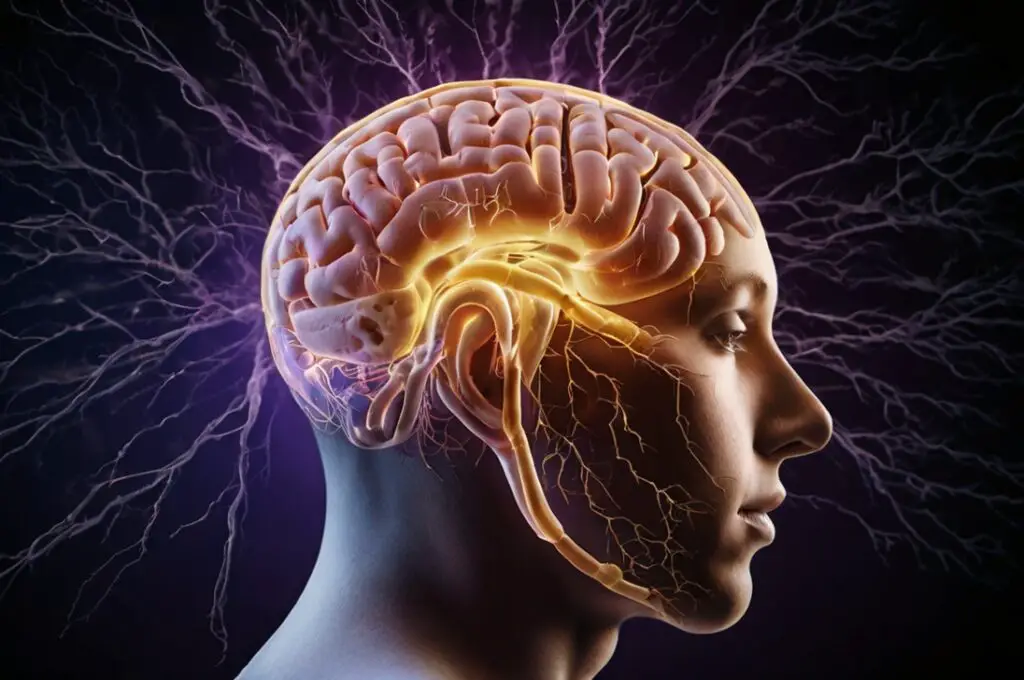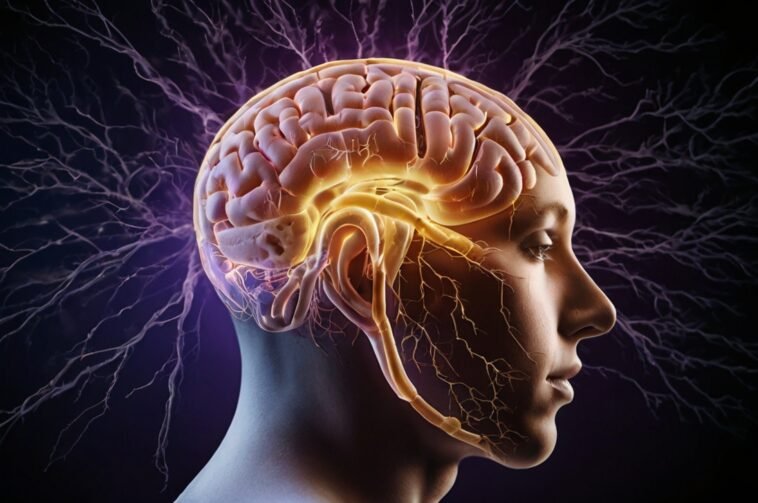
Epilepsy is a neurological disorder affecting millions of people worldwide.
It’s characterized by recurrent, unprovoked seizures caused by abnormal brain activity.
Understanding how the brain behaves during an epileptic episode and what influences these changes can help manage and treat the condition effectively.
In this article, we’ll dive into the different types of epilepsy, how brain activity is impacted, factors that influence this activity, and the treatment approaches available.
Types of Epilepsy
Epilepsy isn’t the same for everyone.
It comes in different forms, and knowing the type of epilepsy someone has is important for finding the right treatment.
Let’s break down the main types:
Focal epilepsy (partial epilepsy)
Focal epilepsy starts in a specific area or lobe of the brain.
There are two main types of focal seizures:
Focal aware seizures
During this type of seizure, the person stays conscious but might feel unusual sensations, like tingling, strange smells, or visual changes.
They are fully aware of what’s happening but can’t control it.
Focal impaired awareness seizures
Here, the person’s awareness is affected, meaning they may seem “out of it” or confused.
They might make repetitive movements like blinking, hand rubbing, or walking in circles without realizing it.
Generalized epilepsy
In generalized epilepsy, the seizures affect both sides of the brain right from the start.
This type includes several subtypes:
Absence seizures
These are brief, lasting just a few seconds, and often involve staring spells.
The person may stop what they’re doing and seem unaware of their surroundings, usually returning to normal right after.
This type is common in children and can be easily missed as daydreaming.
Tonic-clonic seizures
This is what most people picture when they think of a seizure.
It involves two phases: the “tonic” phase, where the body stiffens, followed by the “clonic” phase, where the muscles jerk rhythmically.
These seizures can be scary to witness but are often brief.
Myoclonic seizures
These seizures involve sudden, quick jerks of a muscle or group of muscles, like when your arm or leg jerks unexpectedly.
They’re usually very short, lasting only a second or two, but can happen multiple times in a row.
Combined generalized and focal epilepsy
Some people have both focal and generalized seizures, which makes diagnosis and treatment more complicated.
A person might have one type of seizure one day and a different type the next, so doctors need to carefully monitor the symptoms to adjust treatment.
Unknown Type
Sometimes, it’s hard to determine the exact type of epilepsy.
In these cases, doctors may need to run more tests, like advanced brain scans or monitoring the brain’s electrical activity for a longer time to better understand the condition.

Brain Activity During Seizures
The brain operates using electrical impulses that allow neurons to communicate.
In epilepsy, these impulses become abnormal, leading to a burst of electrical activity that disrupts normal brain function.
Here’s what happens during a seizure:
Hyperexcitability
During a seizure, the neurons in the brain become hyperexcitable.
This means they’re overly sensitive and start firing off electrical signals too rapidly and uncontrollably.
Imagine an electrical circuit being overloaded—everything starts to malfunction, causing a chaotic burst of activity in the brain.
This abnormal firing is what triggers a seizure.
Synchronization
Normally, neurons work either on their own or in small groups, communicating in an organized and controlled way.
But during a seizure, large groups of neurons start firing all at once.
This is called synchronization—like an electrical storm where a huge number of neurons fire together, creating intense and sudden electrical activity in the brain.
This is why a seizure can happen so suddenly and why it affects the brain’s normal functions.
Spread of activity
The way the abnormal electrical activity spreads depends on the type of epilepsy.
In focal epilepsy, the electrical storm starts in one area of the brain and may slowly spread to other parts.
For example, the seizure might begin in the temporal lobe (which handles memory and emotions) and then affect other areas as it progresses.
Research has shown that different brain regions are involved depending on the type of seizure.
For instance, focal seizures may originate in the temporal or frontal lobe, while generalized seizures might involve the thalamus, which acts as a relay station in the brain (source: Epilepsy Research Journal).

Factors Influencing Brain Activity in Epilepsy
Epilepsy is affected by several factors, and understanding these influences can help in managing the condition and choosing the right treatment.
Here are some of the key factors that play a role:
Genetics
Certain genetic mutations can make a person more likely to develop epilepsy.
These mutations affect how neurons in the brain communicate with each other.
For example, some types of epilepsy, like Juvenile Myoclonic Epilepsy (JME), have a clear genetic link, meaning they can run in families.
If epilepsy is inherited, it usually means the brain is more prone to having the abnormal electrical activity that causes seizures.
Structural brain abnormalities
Sometimes epilepsy is caused by physical changes or damage to the brain.
This can happen due to brain injuries, tumors, or developmental problems in how the brain formed.
When the structure of the brain is altered, it can disrupt the normal flow of electrical signals, making it more likely for seizures to occur.
In these cases, the abnormal brain structure can be seen in scans, and treatment often focuses on managing the underlying issue.
Triggers
Everyone with epilepsy may have different things that trigger their seizures.
Some common seizure triggers include:
- Lack of sleep
- High stress
- Flashing lights (like strobe lights or rapidly changing images on a screen)
- Specific sounds or patterns of sound
Recognizing and avoiding these triggers can help reduce the frequency of seizures.
For some, keeping a “trigger diary” can be useful in identifying patterns.
Chemical imbalances
The brain relies on chemicals called neurotransmitters to send signals between neurons.
Two key neurotransmitters involved in seizures are:
- Glutamate: This is an excitatory neurotransmitter, which means it helps neurons “fire” and pass along signals.
- GABA: This is an inhibitory neurotransmitter, which helps calm brain activity by stopping neurons from firing too much.
When there’s an imbalance between these chemicals, it can make the brain more likely to have seizures.
For example, too much glutamate or not enough GABA can lead to overactive brain signals and increase the risk of seizures.
Age and developmental stage
Epilepsy can appear at any age, but some types are more common at certain stages of life.
For example:
- Absence seizures (where a person briefly “zones out” and is unaware of their surroundings) are most common in children.
- Older adults are more likely to develop epilepsy due to other health conditions, like strokes or degenerative brain diseases such as Alzheimer’s.

Treatment Approaches
Managing epilepsy often requires a personalized approach, as different treatments work for different people.
Here are some common ways to treat epilepsy:
Medications
The most common treatment for epilepsy is antiepileptic drugs (AEDs).
These medications help control brain activity and reduce the likelihood of seizures.
For around 70% of people with epilepsy, medication alone can successfully control their seizures (source: Epilepsia Journal).
However, finding the right medication and dose can take time, as everyone’s body responds differently.
Doctors often need to try different drugs or combinations to see what works best for each individual.
Surgery
When medications don’t work, surgery might be an option, especially for people with focal epilepsy, where seizures originate from a specific area of the brain.
The goal of surgery is to remove or alter the part of the brain causing the seizures.
It’s not suitable for everyone, but for those who qualify, surgery can significantly reduce or even stop seizures.
Vagus Nerve Stimulation (VNS)
Vagus Nerve Stimulation is a treatment where a small device is implanted under the skin of the chest.
This device sends mild electrical pulses to the brain through the vagus nerve, which helps regulate brain activity and reduce seizure frequency.
It’s usually considered when medications aren’t enough to fully control seizures.
Ketogenic diet
The ketogenic diet is a special high-fat, low-carbohydrate diet that has been shown to help manage seizures, especially in children with certain types of epilepsy.
The diet changes the way the brain gets energy, which can help reduce hyperexcitability and the likelihood of seizures.
This approach is often used when medications aren’t fully effective.
Behavioral and Lifestyle Changes
Managing epilepsy also involves making lifestyle changes to avoid triggers and reduce seizure risk. Some important strategies include:
- Getting enough sleep
- Managing stress
- Avoiding known seizure triggers (like flashing lights or certain sounds)
Additionally, Cognitive Behavioral Therapy (CBT) and relaxation techniques can be helpful for managing anxiety and stress, which can make seizures less likely.
Making these changes can improve overall quality of life and reduce the frequency of seizures.

Final Thoughts
Epilepsy is a complex condition that affects millions, but understanding the brain’s behavior during seizures can help in managing and treating it effectively.
The advancements in research and treatment options provide hope for those living with the condition, allowing many to lead full and active lives.
If you or someone you know has epilepsy, it’s essential to work closely with a healthcare provider to develop a personalized treatment plan.



